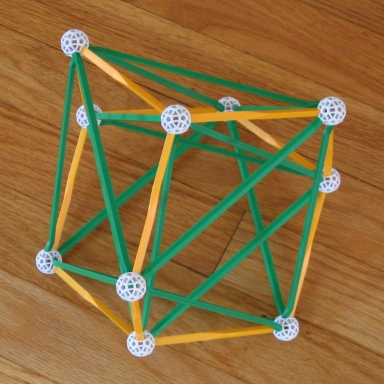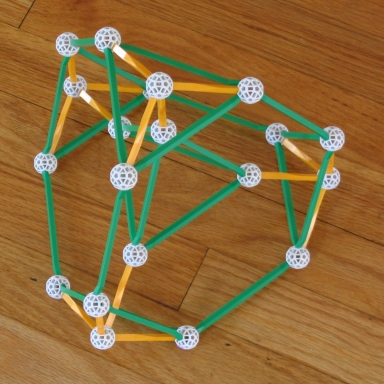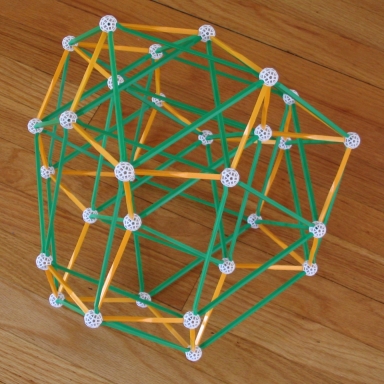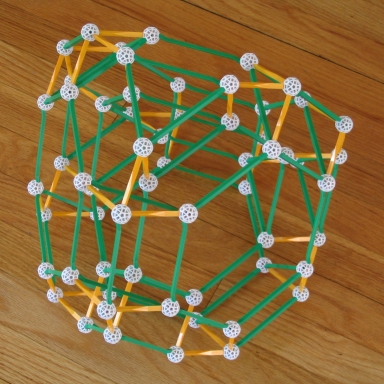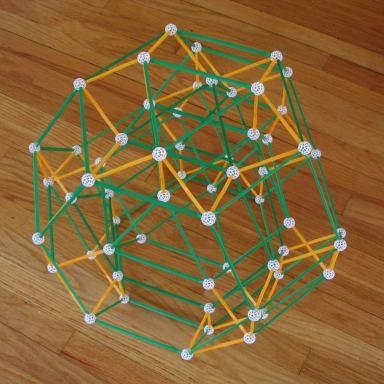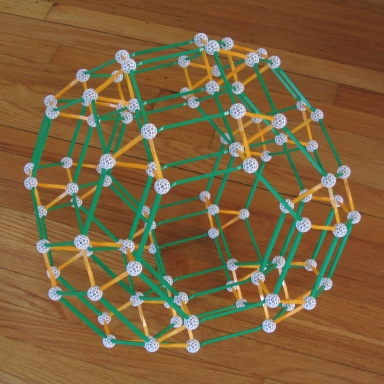A4-Polychora Zome Models
Introduction.
There are 9 convex uniform polychora having the same symmetry as the regular 5-cell, and one can quickly make a set of Zome models for these if one has enough green and yellow struts. All of the models here are based on the model of the 5-cell which uses 6 G3 (long green) struts and 4 Y2 (medium yellow) struts. This model of the 5-cell is characterized as being the most symmetric among all projections from 4-dimensional space to 3-dimensional space. Naturally, one may instead choose to scale down by the golden ratio, instead using G2 and Y1 struts. For some of the models, this is more convenient. One must use half-greens for a couple of these models.
The polychora presented here are classified according their Wythoff symbols. One obtains a Wythoff
symbol by circling a non-empty subset of the nodes of its Coxeter graph. Circling the nodes
amounts to choosing where to place each vertex of the corresponding polychoron
in a fundamental region for the Coxeter group action.
The Coxeter graph is A4,
Three of the Wythoff symbols are invariant under the outer automorphism. This property is reflected in the models in that the images under the orthogonal projection are invariant by the "central involution" which maps each vector to its negative. All three of these models possess self-intersections of one kind or another.
Some data for these polychora appear below. The number of vertices for each is given as v. The numbers of edges and faces are partitioned according to the numbers in each orbit under the Coxeter-group action. One should notice that the number of edge orbits coincides with the number of circled nodes in the Wythoff symbol. For example, the truncated pentachoron has two types of edges, 10 where 3 truncated tetrahedra meet and 20 where 2 truncated tetrahedra and one regular tetrahedron meet, and these clearly lie in distinct orbits. The types of faces appear as Schläfli symbols. For example, the truncated pentachoron has 20 triangles {3} and 10 hexagons {6}.
The Models.
|
|
(0)----0-----0-----0 |
|
|
0----(0)----0-----0 |
|
(0)---(0)----0-----0 |
|
(0)----0----(0)----0 |
|
(0)----0-----0----(0) |
|
0----(0)---(0)----0 |
|
(0)---(0)---(0)----0 |
|
(0)---(0)----0----(0) |
|
(0)---(0)---(0)---(0) |

